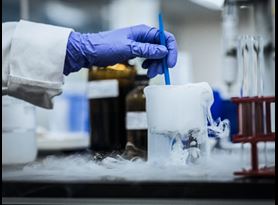5 Things You Can Do With ProteinSimple Maurice Capillary Electrophoresis
1) Assess charge heterogeneity by cIEF (capillary isoelectric focusing)
A number of proteins, including therapeutic antibody-drug conjugates (ADCs), are post-translationally modified by glycosylation and phosphorylation, or undergo deamidation and oxidation. As a result, the overall charge heterogeneity of the sample can be complicated. Consequently, the characterization of such variants with sufficient resolution and sensitivity may not be adequately achieved using traditional techniques. The Maurice platform has the power to separate such variants within protein samples by charge, providing the data needed for biopharmaceutical development characterization, lot release and stability requirements.
2) Measure the size and purity of a protein sample
Quantitative and reproducible test methods for protein sample purity are critical. Examples include methods for distinguishing aggregates and degradants, the ratio of capsid proteins, and for specific to adeno-associated virus (AAV) products. While SDS-PAGE is the traditional approach, the Maurice Capillary Electrophoresis (CE) system provides scientists with a robust alternative, delivering reproducible, quantitative measurements of proteins, antibodies, and viral vectors.
3) Characterize and compare protein glycosylation between batches
Proteins that have undergone extensive glycosylation can be particularly difficult to characterize and compare from batch-to-batch, especially during process development or validation activities. However, this challenge can be overcome when the Maurice CE system is put to use. When bioprocess intermediates or the final product is systematically treated with enzymes to remove specific glycans one at a time, and subsequently separated by charge, the characterization of protein glycosylation may be compared and characterized from batch-to-batch.
4) Analyze multiple samples quickly with high sensitivity
With auto sampling that can be programmed for round-the-clock operation, combined with the quick operation of the Maurice system, samples can be analyzed in a semi-high throughput manner for routine profiling of product properties once analytical methods are established. Furthermore, the capillary imaging and native fluorescence technology that ProteinSimple offers allows for the possibility to analyze small amounts of sample. Specifically, sample volumes as low as 200 µg/mL for SDS-CE (size) or 0.5 µg/mL for cIEF (charge) can be analyzed.
5) Collect 21 CFR-compliant data
Validated methods with Maurice can be an integral part of quality control programs, as its control systems and data integrity compliance meet 21-CFR requirements.
Find related Resources
Learn more

Therapeutic Protein Analysis
Element provides a variety of therapeutic protein analysis and characterization services to design molecule-specific analytical strategies in support of IND and BLA regulatory pathways.

Biopharmaceuticals and Biologics Analysis
Element’s significant expertise in all stages of biologics R&D, from in-house protein biochemistry and molecular biology to cellular biology and QC experience, supports the entire product development life cycle.

Product Development
Element's leading product development labs have a track record of success innovating, optimizing and formulating products for various industries and applications.
Sign Up for Free Resources
Visit Element's email subscription center to receive the latest industry news, technical whitepapers, case studies, webinars, and upcoming events.
